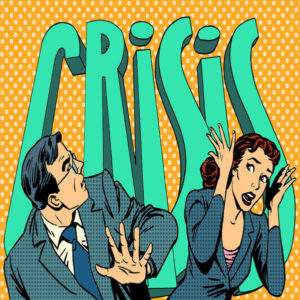by Dr. Ken Broda Bahm:

Let’s say you’re a plaintiff’s attorney, and let’s also say you have a particular niche in personal injury law: amusement park accidents. And, as much as you might feel that primal fear on the “Mind Eraser” high-speed roller coaster, amusement park accidents are actually pretty rare. Thanks to safety standards and frequent inspections, they’re even declining. Does that mean your job as a plaintiff’s attorney winning cases in a courtroom is getting harder? Intuitively, you might think so. But even though the business development side of finding cases could be getting tougher, the task of winning those cases in a courtroom would actually be getting easier.
The reason for that comes down to the psychology of how we assess risks, and the fact that as the prevalence of a problem decreases, it can counterintuitively be perceived as a bigger problem. Based on research reported in a recent release in ScienceDaily, “researchers show that as the prevalence of a problem is reduced, humans are naturally inclined to redefine the problem itself. The result is that as a problem becomes smaller, people’s conceptualizations of that problem become larger.” A team of psychologists at Harvard University (Levari et al., 2018) looked at a variety of tasks and found that people tend to have a floating perception of a problem, and as problems became more rare, people responded by expanding their sense of what is noticed and what counts as a problem. This has some important implications to the ways jurors will think about the kinds of problems that often serve as the foundation for litigation.
The Research: Prevalence-Induced Concept Change
The researchers refer to the phenomena as “prevalence-induced concept change,” meaning that we tend to assess risks not in a vacuum and not driven by the actual scope of the problem, but instead we understand them in the context of previous instances. The team looked at a number of tasks ranging from low-level color perception tasks (counting blue dots), to assessing emotions (distinguishing between neutral and hostile faces), to ethical judgment (serving on a university’s institutional review board deciding on the ethics of research projects).
Across the different tasks, the pattern was that reduced prevalence of a problem led to an expanded concept of the problem: “When blue dots became rare, participants began to see purple dots as blue; when threatening faces became rare, participants began to see neutral faces as threatening; and when unethical requests became rare, participants began to see innocuous requests as unethical.”
The researchers note that these experimental settings also generalize to other perceived social problems. If discrimination becomes rare, for example, it is likely that we will respond by expanding our concept of what counts as discrimination. So solving a problem can ironically lead to the perception that a problem is persisting or even growing.
As one of the authors, Daniel Gilbert, explains, “Our studies suggest that when the world gets better, we become harsher critics of it, and this can cause us to mistakenly conclude that it hasn’t actually gotten better at all. Progress, it seems, tends to mask itself.”
Implications: Address the Psychology of Problem Perception
The ways jurors understand the nature of a problem will matter in how they talk about it in voir dire, how they evaluate the harm experienced by a plaintiff, and how they assess your case generally. So in thinking about how they perceive a problem, pay attention to the reference point, the implicit “Compared to what?” question that is always behind the scenes. If that comparison is a background rate that makes the given injury rare, then that injury may be all the more tragic for that reason.
One other critical factor is the degree of control which the plaintiff, or people generally, believe they possess over a given danger. The driver of a car or an owner of a firearm believe that they control their own level of risk, and for that reason, even very high rates of death and injury don’t create a perceived crisis. But when you’re strapped into a roller coaster seat, your lack of control over that vehicle is obvious, and even very rare accidents can seem particularly threatening. That suggests that it is control, not prevalence of a threat that is the biggest driver of fear. So that means the advocate has an additional step: If you’re trying to play up the danger, emphasize the absence of control, and if you’re trying to play it down, then emphasize how much control we actually have.
Other Posts on Threat Perception:
- Expect Fear to be Driven by Dread, Not Data
- Understand Why Fear (Often, not Always) Persuades
- Expect Reptiles to Invade New Habitats
Levari, D. E., Gilbert, D. T., Wilson, T. D., Sievers, B., Amodio, D. M., & Wheatley, T. (2018). Prevalence-induced concept change in human judgment. Science, 360(6396), 1465-1467. DOI: 10.1126/science.aap8731